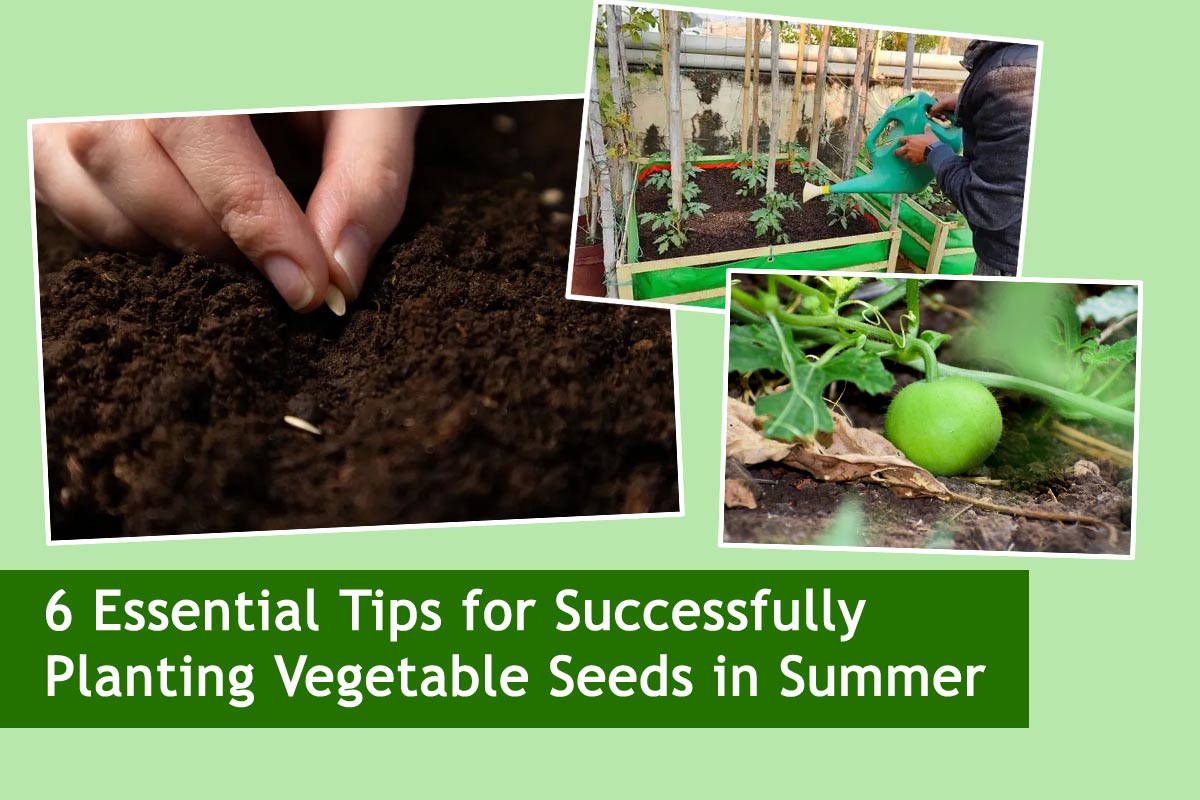
6 Essential Tips for Successfully Planting Vegetable Seeds in Summer
As the temperatures rise and the sun shines brightly, summer offers the perfect opportunity to grow your own delicious vegetables right in your backyard. However, planting vegetable seeds in the summer requires careful attention and specific techniques to ensure successful growth amidst the heat. In this guide, we’ll explore six essential tips to help you achieve a thriving vegetable garden during the summer months.
Essential Tips for Successfully Planting Vegetable Seeds in Summer
Choose Heat-Tolerant Varieties:
Selecting the right vegetable varieties adapted to summer conditions is crucial for success. Opt for heat-tolerant varieties that can withstand high temperatures without compromising yield or flavor. Examples include tomatoes (such as heat-resistant cherry tomatoes), peppers, eggplants, cucumbers, and squash. These varieties are bred to thrive in warmer climates and are more resilient against heat stress.

Also Read This : Container Gardening Essentials: Top 5 Vegetables for Compact Spaces
Timing Is Key:
Timing plays a vital role in summer vegetable gardening. Start planting seeds early in the season to give your plants ample time to establish before the peak of summer heat sets in. However, avoid planting too early when the soil is still too cold, as this can lead to poor germination rates and stunted growth. Consult a planting calendar or local gardening resources to determine the optimal planting dates for your area.

Also Read This : Green Companions: 10 Pet-Friendly Plants to Spruce Up Your Home!
Provide Adequate Watering:
Proper watering is essential for summer vegetable seeds to germinate and grow into healthy plants. However, it’s crucial to strike a balance – while water is necessary, overwatering can be detrimental to plant health, leading to root rot and other issues. Water your vegetable garden deeply and infrequently to encourage deep root growth and drought tolerance. Consider installing a drip irrigation system or soaker hoses to deliver water directly to the roots while minimizing water waste through evaporation.

Also Read This : 10 Tiny Houseplants: Growing Love That Outgrows Your Space
Mulch to Conserve Moisture:
Mulching is a simple yet effective technique to conserve soil moisture and regulate soil temperature in summer. Apply a layer of organic mulch, such as straw, shredded leaves, or grass clippings, around your vegetable plants to suppress weeds, retain moisture, and keep the soil cool. Mulching also helps prevent soil compaction and erosion, creating a healthier growing environment for your summer vegetables.

Also Read This : A Guide on How to Care for Your Tomato Plant Post-Planting
Provide Shade and Shelter:
Protecting your vegetable garden from the scorching summer sun is essential for preventing heat stress and sunburn damage to your plants. Consider providing temporary shade structures or using shade cloth to shield sensitive crops during the hottest parts of the day. Planting taller crops, such as corn or sunflowers, on the western side of your garden can also provide natural shade and shelter for shorter plants. Additionally, placing potted plants strategically to create microclimates can help regulate temperatures and humidity levels within your garden.
Also Read This : Cultivating Green Spaces in Tiny Homes: Gardening Tips for Limited Living Quarters
Monitor Pests and Diseases:
Summer brings not only heat but also an abundance of pests and diseases that can threaten your vegetable garden. Stay vigilant and regularly inspect your plants for signs of pest infestation, such as chewed leaves, holes, or discoloration. Use natural pest control methods whenever possible, such as handpicking pests, introducing beneficial insects, or using organic pesticides as a last resort. Additionally, practice good garden hygiene by removing any diseased or damaged plant material promptly to prevent the spread of diseases.
Also Read This : Transform Your Balcony into a Serene Sanctuary: Tips for Creating a Cozy Outdoor Retreat
Successfully planting vegetable seeds in summer requires careful planning, attention to detail, and a bit of patience. By choosing heat-tolerant varieties, timing your plantings appropriately, providing adequate water and mulch, offering shade and shelter, and monitoring pests and diseases, you can create a thriving vegetable garden that yields a bountiful harvest throughout the summer months. With these six essential tips in mind, you’ll be well on your way to enjoying the fruits of your labor and savoring the flavors of freshly grown summer vegetables straight from your own backyard.




